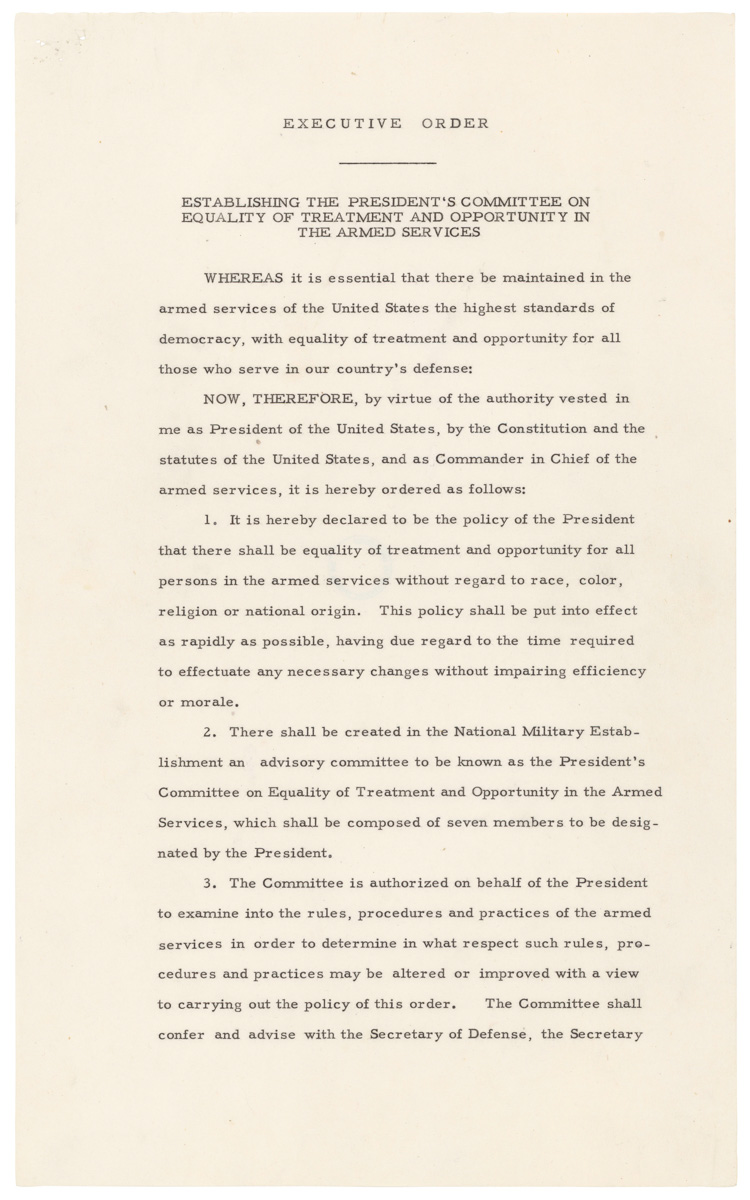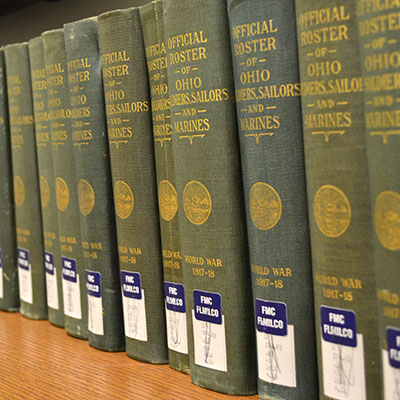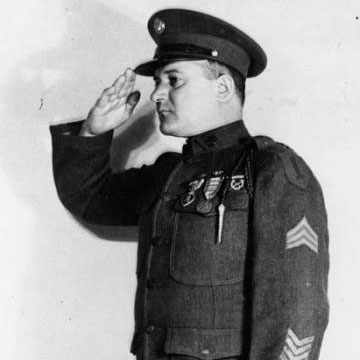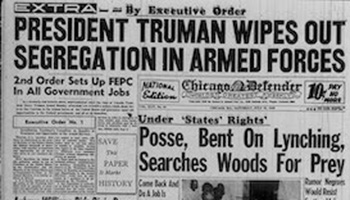Executive Order 9981
As we welcome Black History Month, it’s important to note that the American military was one of the first places in which civil rights reforms occurred in the United States in the 20th century.
During World War I, United States Army units such as the Harlem Hellfighters (369th Infantry Regiment) and the Black Devils (370th Infantry Regiment) saw extensive combat as part of the 93rd Infantry Division. Then in World War II, the Tuskegee Airmen (332nd Fighter Group and the 477th Bombardment Group), the 442nd Infantry Regiment (a unit which consisted primarily of second-generation United States citizens of Japanese descent), and other segregated units became known for their valiant service and wartime contributions. The bravery of these soldiers, sailors, and airmen undoubtedly contributed to the reappraisal of the practice of segregation in the United States military.
After the war, President Harry S. Truman appointed a panel to serve as the President's Commission on Civil Rights. This group  eventually recommended "more adequate means and procedures for the protection of the civil rights of the people of the United States." By February of 1948, President Truman called upon Congress to consider all of the panel’s recommendations, thus paving the way for Executive Order 9981 to go into effect on July 26, 1948. This order abolished discrimination “on the basis of race, color, religion, or national origin” in the United States Armed Forces and resulted in the early integration of the military services during the Korean War (1950 – 1953).
eventually recommended "more adequate means and procedures for the protection of the civil rights of the people of the United States." By February of 1948, President Truman called upon Congress to consider all of the panel’s recommendations, thus paving the way for Executive Order 9981 to go into effect on July 26, 1948. This order abolished discrimination “on the basis of race, color, religion, or national origin” in the United States Armed Forces and resulted in the early integration of the military services during the Korean War (1950 – 1953).
However, the integration of the United States Armed Forces was not an easy process. Fraught with politics, the successful integration gave civil rights activists the ammunition they needed to integrate communities in the civilian sector.
Over the course of 2023, the Museum & Library will explore this topic in American military history in a variety of ways because our diversity gives us strength!
To learn more, read:
Colley, David P. Blood for Dignity: The Story of the First Integrated Combat Unit in the U.S. Army. 1st ed. New York: St. Martin's Press, 2003.
Höhn Maria, and Martin Klimke. A Breath of Freedom: The Civil Rights Struggle, African American GIs, and Germany. 1st ed. Culture, Politics, and the Cold War. New York: Palgrave Macmillan, 2010.
Jefferson, Robert F. Fighting for Hope: African American Troops of the 93rd Infantry Division in World War II and Postwar America. War/Society/Culture. Baltimore: Johns Hopkins University Press, 2008.
Knauer, Christine. Let Us Fight As Free Men: Black Soldiers and Civil Rights. 1st ed. Politics and Culture in Modern America. Philadelphia: University of Pennsylvania Press, 2014.
MacGregor, Morris J, and Center of Military History. Integration of the Armed Forces, 1940-1965. Defense Studies Series. Washington, D.C.: Center of Military History, U.S. Army, 1981.
Maxwell, Jeremy P. Brotherhood in Combat: How African Americans Found Equality in Korea and Vietnam. First ed. Norman: University of Oklahoma Press, 2018.
Nalty, Bernard C. Long Passage to Korea: Black Sailors and the Integration of the U.S. Navy. U.S. Navy and the Korean War. Washington, D.C.: Naval Historical Center, 2003.
Schneller, Robert John. Blue & Gold and Black: Racial Integration of the U.S. Naval Academy. 1st ed. Texas a & M University Military History Series, 115. College Station: Texas A & M University Press, 2008




Add new comment